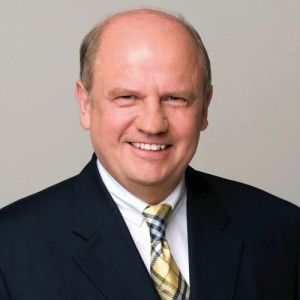There is one undeniable fact underlying farm equipment sales all around the world. When farm incomes rise, machinery sales numbers rocket right along with them. Higher farm profits are re-invested, with producers willing to spend money and even take on debt, especially on equipment.
Farm fleets do need to be regularly updated, of course, but record farm incomes since 2008 have fuelled unprecedented spending on new machinery, just as they have also pushed farmland values and land rental rates to record highs as well.
But farm commodity prices and farm incomes are notoriously fluid.
Read Also

Building a farm legacy that outlasts you
A farm’s legacy isn’t just about the land; it’s also about the values and the impact that continue long after the current owner has stepped away.
So the question is, do those periods of high incomes create a kind of euphoria or recklessness that induces farm managers to make long-term financial decisions that could seriously reduce profits in future years, especially if revenues fall?
A recent study suggests it may.
Michael J. Cooper of the University of Utah, Huseyin Gulen of Purdue University, and P. Raghavendra Rau of the University of Cambridge in the U.K. looked at the link between the compensation packages paid to CEOs and their company’s performance. They co-authored a report and published their findings in October, 2014.
The researchers surveyed 1,500 major corporations, analysed their financial performance and correlated that to the amount of money their CEOs pocketed in a year.
Granted, most farmers aren’t CEOs of structured multinationals, but all farmers get their compensation package based on the performance of their operation, and they are the ones making investment decisions. So there is a strong parallel.
And to add to that similarity, in recent times most CEO compensation packages have been linked directly to the performance of their company’s stock. The thinking is that this creates an incentive to perform. The better their management decisions and the higher dividends that stockholders see, the better the CEO’s paycheque.
It sounds logical, but apparently there is a risk. When you overpay CEOs, they start to make investment decisions that negatively affect the future performance of their firms.
“We find evidence that chief executive officer (CEO) pay is negatively related to future stock returns for periods up to three years after sorting on pay,” reads the report. “Our results appear to be driven by high pay-related CEO overconfidence that leads to shareholder wealth losses from activities such as over-investment and value-destroying mergers and acquisitions.”
Forbes annually surveys the top-earning CEOs in the United States. It not only tallies up the pay packets each executive takes to the bank, it also looks at the performance of the company under that person’s leadership, measuring it against similar firms, and then giving the CEO an efficiency rating.
The problem is, the pay and efficiency rates on the Forbes scale don’t exactly mesh the way that the compensation theory would lead you to expect, which seems to lend support to that study on pay versus performance.
Here’s an example.
In Forbes’ 2012 top earners list, the No. 1 wage-earning CEO was John H. Hammergren of McKesson (a health care and pharmaceuticals company). He collected an eye-watering US$131.19 million. But the efficiency rating Forbes gave him based on his company’s performance was a decidedly middle-of-the-road 121.
On the Forbes scale 1 is best and 206 is the worst.
In contrast to that, you have to leaf through to number 495 on the list to find Warren J. Buffett, CEO of Berkshire Hathaway. Buffett — if you really haven’t heard of him — is considered by nearly everyone to be an investment genius.
Buffett’s corporate compensation package totalled a measly US$490,000 in the year of the survey. Of course, at the time he owned what Forbes estimated was more than US$44 billion in company stock, but either way, he gets an impressive efficiency rating of 33, despite finishing nearly last on Forbes’ top 500 earners list.
That CEO compensation study should provide producers with a new metric to consider when they evaluate their own management performance this winter, especially after we’ve just gone through a few years of record commodity prices — at least in the grain and oilseeds sector. How have higher incomes affected their decision-making? Have they taken more high-risk financial gambles? Have they over-invested in machinery, land or anything else that will drag down future profits? How would they rate on something like Forbes’ efficiency scale?
What ag equipment CEOs are worth
One of the most controversial topics in the relationship between corporations and their shareholders in recent years has been the compensation packages awarded to senior executives and, most significantly, CEOs (chief executive officers).
With so many CEOs now raking in incredibly large pay packets, a few investors have asked if the term “corporate raider” should take on a whole new meaning.
When it comes to ag equipment manufacturers, we took a look at the major-brand CEOs to see where they land in the world of executive compensation.
Starting with Samuel Allen, CEO of John Deere, the company’s 2013 proxy filing with the SEC (U.S. Securities and Exchange Commission) shows his total compensation package for that fiscal year, including wages, benefits and stocks, netted him US$19,148,372. The other four top executives whose salaries were declared in the filing picked up in excess of US$4 million each.
According to glassdoor.com, a website that lists pay scales, a middle-of-the-road engineer at John Deere gets paid an annual salary in the mid-US$70,000 range. So in one year Allen makes an amount equal to the combined annual earnings of about 255 of his engineers.
Looked at another way, in one year Allen makes the same amount that seven engineers would earn in their entire careers (at that constant pay rate).
To his credit, according to the Wall Street Journal, Allen actually asked for a 25 per cent reduction in his cash bonus this year because of a tightening up of market conditions. That dropped his annual earnings by about US$1.8 million. Despite that, his 2014 earnings still hit US$20.3 million.
The paper cites a proxy filing by Deere in mid-December as the source of that information. That filing wasn’t yet on Deere’s investor website at the time of this writing.
Over at AGCO, its SEC proxy filing notified investors of a stockholder meeting held in April of 2014, in which shareholders would be asked to approve, among other things, CEO, Martin Richenhagen’s 2013 pay packet. All totalled, his full compensation for fiscal 2013 fell in at $11,742,360.
That proxy filing contained a summary of the brand’s “(executive) compensation philosophy and program design.” Here is how the company says it structured its senior executives’ compensation program.
“(It) is intended to support the company’s business strategy and align executives’ interests with those of stockholders and employees (i.e. pay for performance)… The company believes that as an executive’s responsibilities increase, so should the proportion of his or her total pay comprised of annual incentive cash bonuses and long-term incentive compensation, which supports and reinforces the company’s pay-for-performance philosophy.”
That has become a relatively common approach for major corporations.
Finally, CNH, which includes the New Holland and Case IH brands. It’s part of the Fiat Industrial group of companies. Its 2012 SEC filing shows CEO Sergio Marchionne took in “renumeration” of approx. C$4.06 million and equity renumeration with a “fair value” of C$8.72 million in that year (making a total of C$12.78 million with exchange rate at press time).
Despite the enormity of these numbers, the three ag equipment brand CEOs actually earn modest incomes, relatively speaking. They don’t even come close to the top of the Forbes survey of highest paid executive salaries. Fashion icon Ralph Lauren, No. 2 on the Forbes list, pulled US$66.65 million out of his company in 2012. Even the head of Starbucks doubles Allen’s numbers.
This article was originally published as “Executive privelage” in the February 17, 2015, issue of Country Guide

















